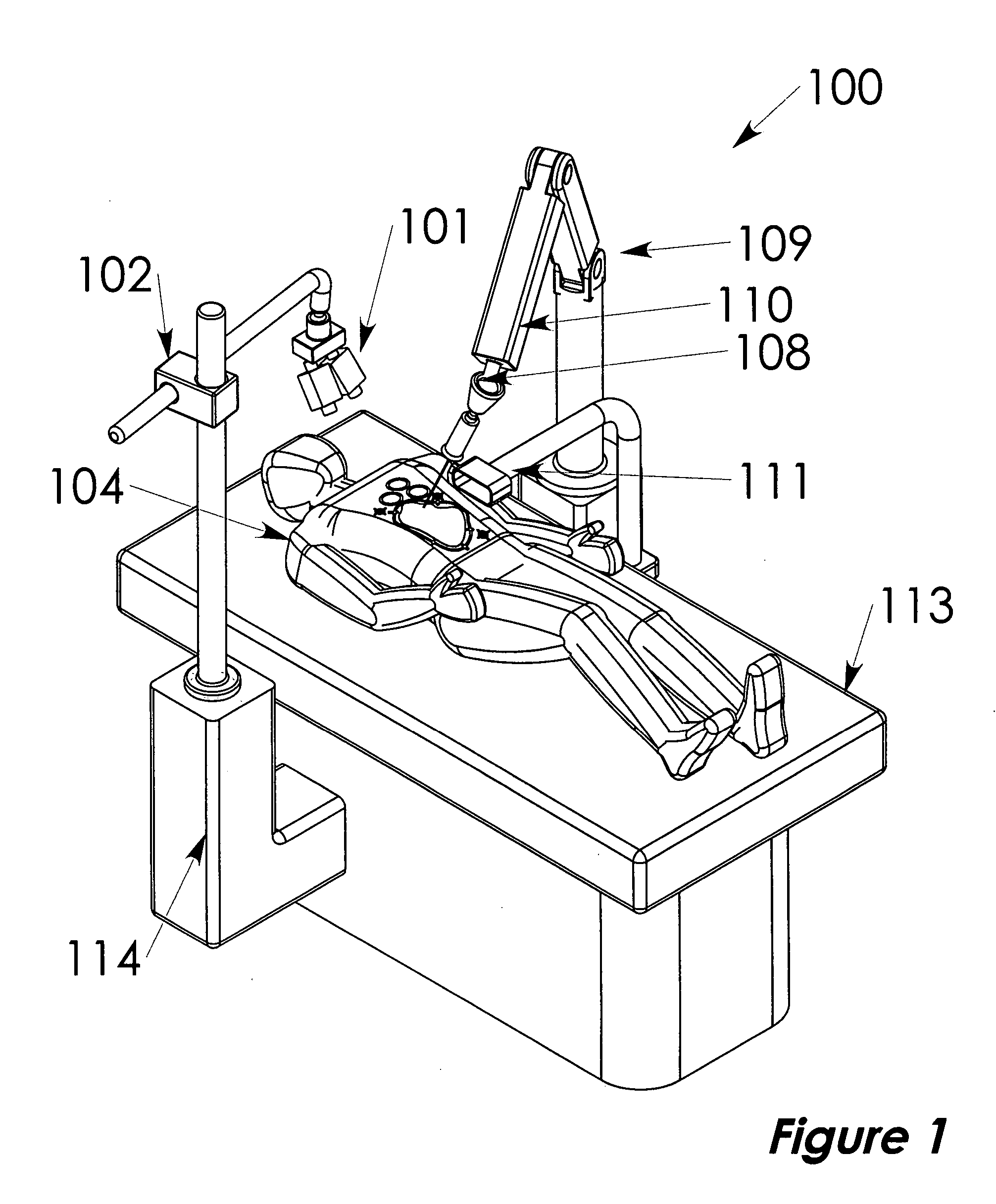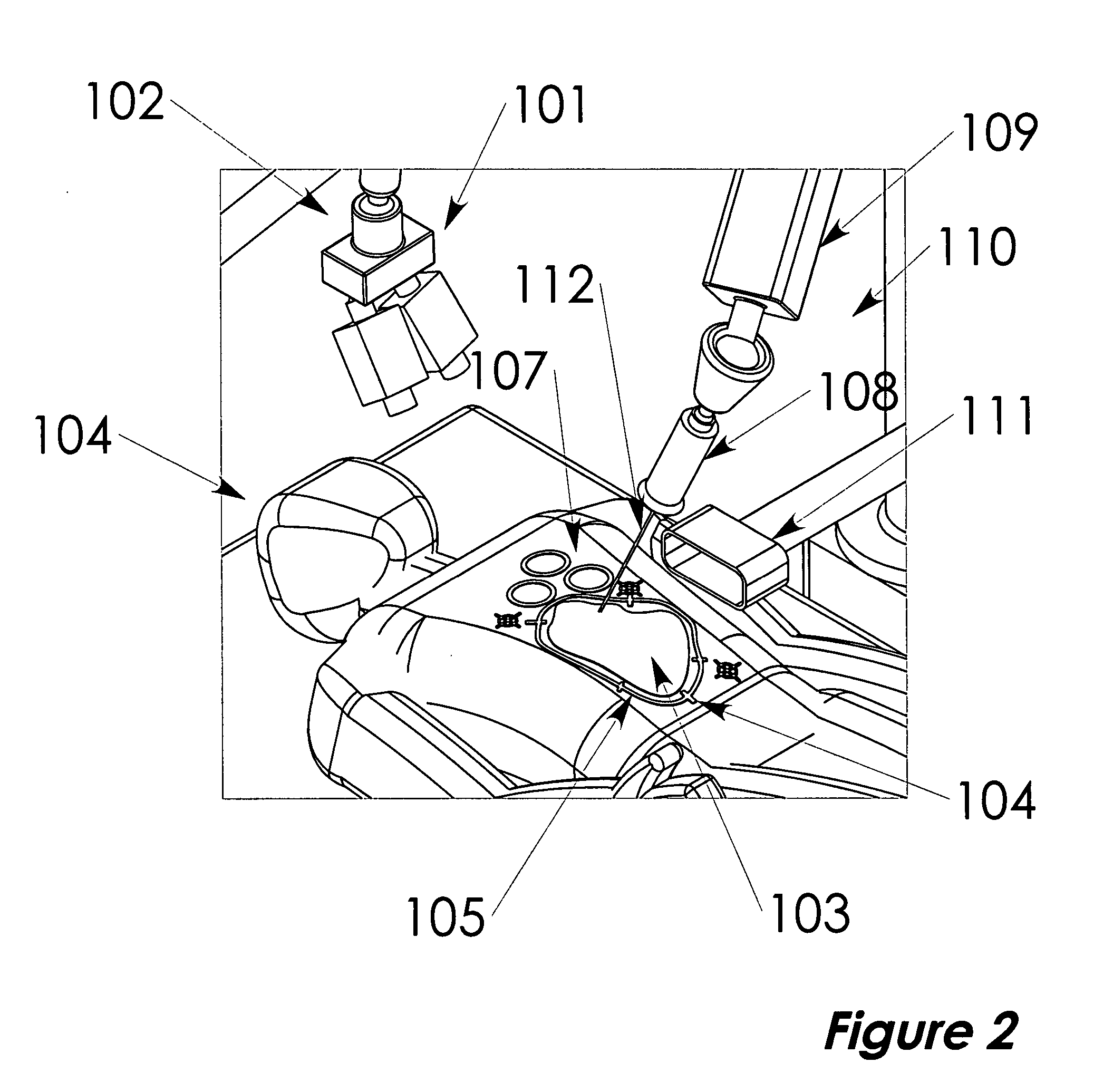Automated laser-treatment system with real-time integrated 3D vision system for laser debridement and the like
a laser treatment and laser head technology, applied in the field of automatic control of laser heads, can solve the problems of significant cosmetic and/or functional deficits, significant increase in blood flow to the skin, and much greater blood loss, and achieve the effect of reducing the logistical burden of medical car
- Summary
- Abstract
- Description
- Claims
- Application Information
AI Technical Summary
Benefits of technology
Problems solved by technology
Method used
Image
Examples
embodiment 140
[0095] It is appreciated by those familiar with the art that even though an arc-type and two rail gantry system is shown in the schematics of the embodiment 140, any other gantry type (such as one rail type) or any other type of such robotic system may be used instead. This embodiment can be suitable for hospitals or other similar settings due to the total size and weight of the system. The gantry system can be integrated into the structure of the bed.
[0096] The primary advantage of the embodiment 140 over the embodiments 100 and 120 is that the geometric relationship of the 3D vision system camera and projector system 142 with the laser scanner head 143 is fixed in the ILSRTV system and pre-calibrated. Once the treatment area 148 and its 3D geometry are determined, a simple algorithm is used to plan the scanning path of the laser beam 145. During the treatment process, the scanning path of the laser beam 145 is constantly corrected to account for potential body motions of the subje...
embodiment 200
[0108] Still yet another embodiment 200 of the present invention is shown in FIG. 7. FIG. 8 shows the general positioning of the embodiment 200 during the treatment of a patient 201 laying over the bed 202. The system 200 is designed to be self-contained, requiring only electrical power for operation. The system 200, with its articulating arm stowed over the base cabinet, can be readily stored or moved to a side until it is needed again. The setup of the system 200 will generally proceed as follows: [0109] 1. Wheel the system 200 into approximate position and lock wheels 203. [0110] 2. Grasp treatment head handle(s) 204 and depress button (not shown) to unlock joints 205 of articulating arm 206. Such articulating arms are well known in the art. [0111] 3. Position treatment head 207 such that the bottom periphery of the laser shield 208 is close to the patient 201 and envelopes the desired treatment area. [0112] 4. Position the LCD touch screen 209 in a convenient location such that ...
PUM
 Login to View More
Login to View More Abstract
Description
Claims
Application Information
 Login to View More
Login to View More - R&D
- Intellectual Property
- Life Sciences
- Materials
- Tech Scout
- Unparalleled Data Quality
- Higher Quality Content
- 60% Fewer Hallucinations
Browse by: Latest US Patents, China's latest patents, Technical Efficacy Thesaurus, Application Domain, Technology Topic, Popular Technical Reports.
© 2025 PatSnap. All rights reserved.Legal|Privacy policy|Modern Slavery Act Transparency Statement|Sitemap|About US| Contact US: help@patsnap.com



